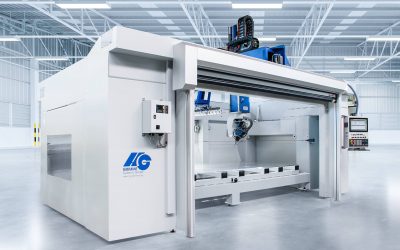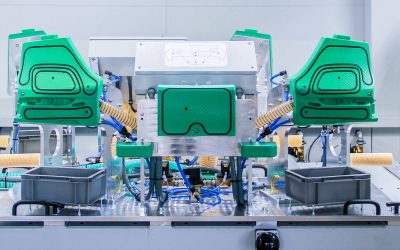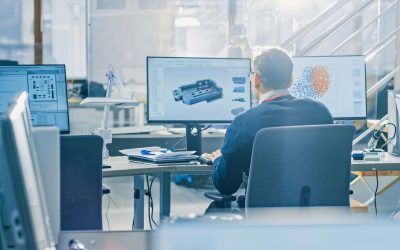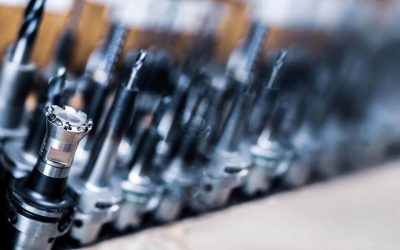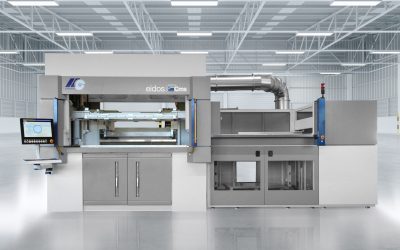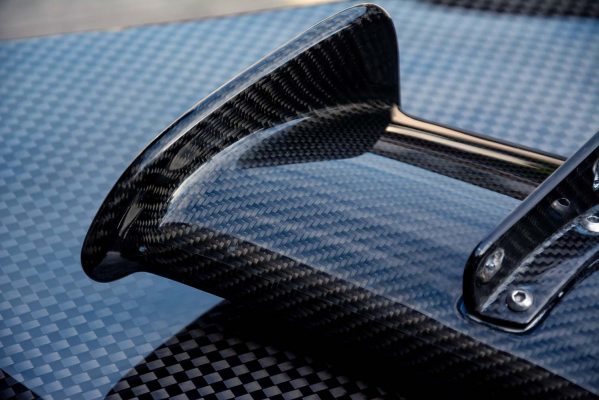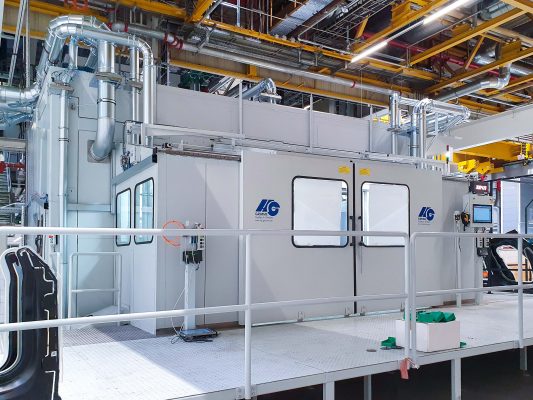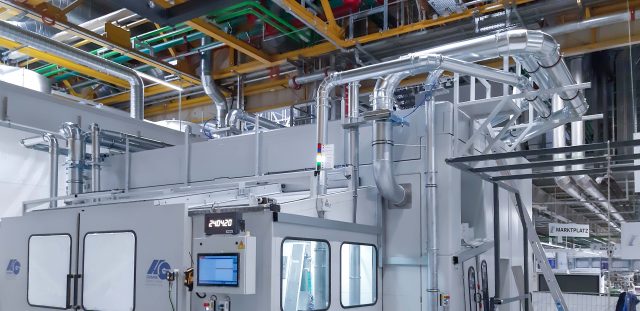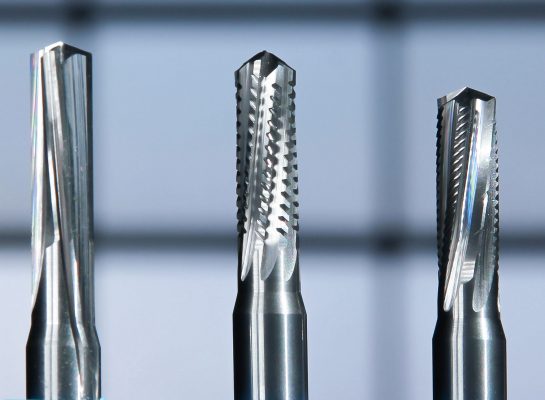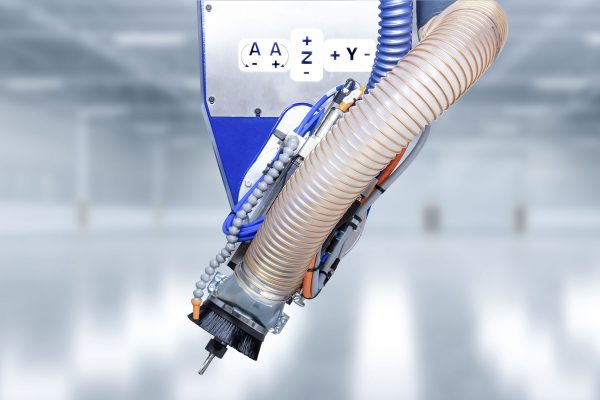CFRP milling:
A fine line between nightmare and lightweight vision
Interview with technology reporter Nikolaus Fecht
Carbon fibre reinforced plastic (CFRP) is tempting car designers to dream of lightweight designs that compensate for the additional weight of electric cars. But those who embrace the lightweight concept are risking a nightmare. Technology reporter Nikolaus Fecht found out how the risk can be managed with the right feel for CFRP and the appropriate technology in the Allgäu region from machine manufacturer Wolfgang Grimme and his technical director Bernd Settele
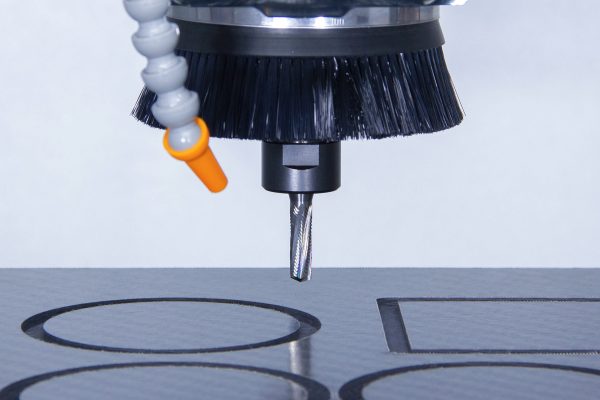
CFRP HAS EXCLUSIVE BENEFITS
Mr Grimme, your company has been working with machines for machining all kinds of plastics and composite materials for more than three decades. One particular speciality is machining the composite material CFRP. For example, in 2006 you were awarded the contract to laser-machine CFRP parts for use in motorcycling and motor racing. You then developed a CNC milling machine for machining CFRP components for the automotive industry. Why did you decide to develop special milling machines for machining CFRP?
Wolfgang Grimme, Managing Director of HG GRIMME SysTech GmbH, Wiedergeltingen: The trend has been very clearly towards lightweight construction for a number of years. The material CFRP helps to meet the new, high environmental specifications in the automotive and aviation industries. Among other factors, lighter cars and aircraft use less fuel thanks to CFRP. This material also compensates for the additional weight of new drive types – in electric cars, for example. This material also has a number of exclusive benefits: CFRP can be used to manufacture extremely light components that are also renowned for their high level of rigidity and stability.
BLACK HIGH-TECH GOLD
The factors opposing CFRP are the high amount of energy used in production, unresolved issues of disposal and the fact that recycling has been slow to get up and running. Why is CFRP still a green material?
Grimme: When CFRP is processed, this produces electrically conductive and combustible dusts that can harm people’s health. We have managed to develop methods which make it possible to filter almost all the dusts that are produced during machining in a CNC machining centre. We were very keen here to reliably protect not just the machine itself, but also the humans operating it from the dusts created during the milling process.
Grimme: It’s absolutely true that the issue of disposal has not been definitively resolved. What matters is that the material is recycled. There are very good possible solutions: Some waste management companies do in fact offer a complete disposal option that is documented. At present, roughly half of the initial material can be reprocessed. That’s not enough though. Research is currently being done to develop technologies that can separate the material into different substances. But given the clear benefits, I am certain that even better solutions will be available soon. For the more that CFRP is used, the more experience and know-how the CFRP manufacturers will gain too. It’s also well worthwhile for many industries to conduct research in this field.
Which also brings me back to your question: CFRP is a material that does not have a natural origin. However, it does combine many perfect characteristics and helps to preserve natural resources. For example, the composite material is five times lighter compared to steel, does not rust and is much more robust. This helps the aviation and automotive industries in particular to develop eco-friendly designs for transport and logistics. In addition, CFRP can be shaped as you want without too much effort. So all in all, I would say that: CFRP is a material that really helps us to progress towards a green future and is rightly described as the black high-tech gold.
CFRP DUST FILTERING IS THE BE-ALL AND END-ALL
How do you protect people and machinery from the risks of CFRP machining?
Grimme: When CFRP is processed, this produces electrically conductive and combustible dusts that can harm people’s health. We have managed to develop methods which make it possible to filter almost all the dusts that are produced during machining in a CNC machining centre. We were very keen here to reliably protect not just the machine itself, but also the humans operating it from the dusts created during the milling process.
SO THAT IT DOESN’T BANG
How do you help companies that are breaking new ground with CFRP machining?
Grimme: Most companies are aware of the risks that milling CFRP entails. Any consultation and development work primarily involves the details of implementation. The huge amount of dust that is produced requires special technical solutions which need to be integrated into the respective business. It is not just the CNC milling centre itself that needs an appropriate space, but also the extraction unit. On the other hand, the control cabinet does not just require a technical solution to prevent the ingress of dust. The control cabinet also cannot simply be placed right next to a CNC machine. This is because the dusts will cause short-circuits if they get inside. This does not take very much: A single fibre, thinner than a hair, is sufficient: Then it will go bang! We consider all of this in our planning.
CFRP MILLING – AN INTERPLAY
Mr Settele, is a standard CNC machine actually sufficient for CFRP milling?
Bernd Settele, Technical Director of HG GRIMME SysTech GmbH, Wiedergeltingen: Yes and no. The machine needs to be a standard machining centre that has the technical equipment needed for machining CFRP. As we have the version for composite material in our range, for us it is definitely a standard CNC milling centre – just with the appropriate equipment for machining CFRP. But having the right software solution for the particular application is also an important component.
Let me give you one practical example: For the purpose of milling CFRP bodywork components, we developed a five-axis CNC machining centre with an inclined bed/rotary table which can be fed ergonomically. As soon as the workpiece is correctly positioned on the table, it rotates in the enclosed milling cabin in which the CFRP part is machined.
The software is an additional vital component for machining this material. The Siemens Sinumerik 840D Solution Line control system employs programs with a special milling strategy. The combination of tool management and layer feed of the cutting depth increases the lifespan of the tool and keeps the surface quality of the tool consistently high. This strategy also counteracts the huge amount of heat that is produced and can only be dissipated through the milling tool in the milling process.
Milling quality and composite material
The increase in electric mobility means that the demand for lightweight construction with CFRP is also increasing: For example, you recently won multiple BMW tenders to construct a five-axis gantry rotary table milling machine to machine side section components at the Landshut factory. With orders like these, how do you handle the requirements for the milling quality, which are actually very high for visible components that are on display?
Grimme: We are a leading manufacturer for machining composite materials and plastics. The milling quality is not the issue, because our machines are designed for this. We have been developing CNC machines that deliver top-class milling quality for more than 30 years. There are now three of our machines operating at BMW’s factory in Landshut.
Top quality only with the right tools
CFRP milling hinges on the interaction between the machine and tools: Do you recommend certain tools?
The milling tools which are used in machining centres differ significantly in their quality, for example in the balance quality. Whereas lower-quality milling tools may cause damage to the milling spindle, possibly high repair costs and machine shutdowns, high-quality tools produce hardly any vibrations or the damage associated with this. We work as a team to develop special cutters that are designed specifically for CFRP machining – to suit our customers and their requirements precisely.
CFRP processing: nothing left to chance
CFRP chips and dusts present a particular challenge: If they are not extracted reliably, the machine operators may suffer damage to their mucous membrane, fibrosis of the lungs, cancer or asthma. At BMW you are therefore relying on a newly developed, powerful machine for extracting the fine dust from several sides, an additional medium-pressure machine for filtering the suspended particulate matter, and a blow-off and extraction machine for the insertion area.
Is this typical, is there not a standard solution?
Settele: We do have standard solutions which we adapt to the customer’s component size and individual manufacturing. One example of our standard solutions is our CNC inclined bed machine with a rotary table and ingenious extraction system. The CFRP component is milled in a sealed-off machine cabin: The operator places it on outside of the milling cabin and never enters the milling chamber during production. The milling chamber is designed so that almost all of the dust can be extracted.
The extraction takes place during the actual milling before the dust can spread. The fixture is also designed to remove the dust immediately. The extraction is done through the milling cutter holder directly next to and along the cut contour. The milling head has an additional extraction unit which removes the dust so that there is the least possible spread of CFRP dusts within the cabin.
In addition, the air containing the rest of the suspended particulate matter is extracted from the milling cabin during CFRP machining. This efficient extraction system for suspended particulate matter works with a high-pressure and a medium-pressure installation which produces different flows. The air is purified following extraction with special filters. It can be fed back into the building or released into the open air. The installation is designed to provide constant checks of the filtering process and protection of the operator. The extraction system features filter breakage monitoring. If it fails, this is registered by a police filter. So we never leave anything to chance with CFRP machining.
CFRP suspended dust is extracted in several steps
You will never really achieve true cleanroom conditions in a typical production hall in which machining takes place. But how effective are your filters?
Settele: Our sophisticated, multi-stage extraction system enables us to achieve an extremely high level of filtering and purity of the air, which means that in winter the exhaust air from the extraction system can actually be fed back into the hall to reduce the heating costs.
Do your machines prevent hazards such as a fire in the control cabinet sufficiently reliably that customers can operate them without personnel in what are known as “ghost” shifts?
Settele: Of course. Our machines can be connected directly to the central fire alarm system and to sprinkler installations.
No off-the-shelf control cabinet
Now CFRP is not only potentially harmful to people’s health, but as an electrically conductive composite material it can also paralyse the machine. How do you prevent short-circuits?
Settele: Our sophisticated, multi-stage extraction system enables us to achieve an extremely high level of filtering and purity of the air, which means that in winter the exhaust air from the extraction system can actually be fed back into the hall to reduce the heating costs.
Do you collaborate with a control cabinet manufacturer?
Engineers dust protection
Settele: We manufacture our control cabinets ourselves because there is no ready-made CFRP-proof control cabinet available. Our engineers create the CFRP dust protection for the control cabinets down to the very last detail: This is how we ensure top-quality control cabinets for CFRP machining.
Do your machines prevent hazards such as a fire in the control cabinet sufficiently reliably that customers can operate them without personnel in what are known as “ghost” shifts?
Settele: Of course. Our machines can be connected directly to the central fire alarm system and to sprinkler installations.
CFRP with titanium or CFRP with aluminum
In the aerospace industry in particular, sandwich structures such as CFRP with titanium or CFRP with aluminium are popular. What sort of solution do you offer for this application?
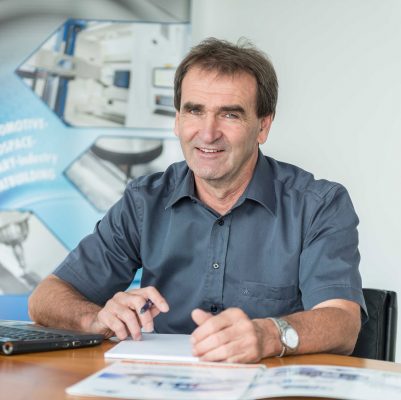
“These materials are not a problem either; we have already developed solutions for them: We deploy a CNC milling machine which has all the right equipment with the appropriate clamping fixture and the correct milling cutters.”

Black high-tech gold: CFRP creates “electric mobility”
Carbon fibre reinforced plastics (CFRP) have been around for a long time, but the composite fibre materials made their big breakthrough on a large scale around a decade ago at the BMW plant in Leipzig. This was the first time that a car had been mass-produced with a body that was made almost entirely from carbon fibre reinforced plastic (CFRP). This gave Harald Krüger, who was BMW’s Director of Production at the time, enough cause to talk of a revolution within car-making. For example, according to Automobilwoche magazine, the car manufacturer was able to compensate for the additional weight of the battery for the electric drive with the CFRP body of the i3.
The groundwork was done by the aerospace industry, which values CFRP because of its very low weight, high strength and rigidity and because of its fire ratings. The automotive industry has so far used CFRP primarily on a small scale, for prototypes or in motor racing. But the two mega trends of increased electric mobility and lightweight construction are making people think again.
BMW’s venture gave not just the car industry but lots of other sectors the courage to make the first steps. The global demand for CFRP is now increasing by five to ten per cent each year across all industrial sectors.

Autor: Engineer Nikolaus Fecht

